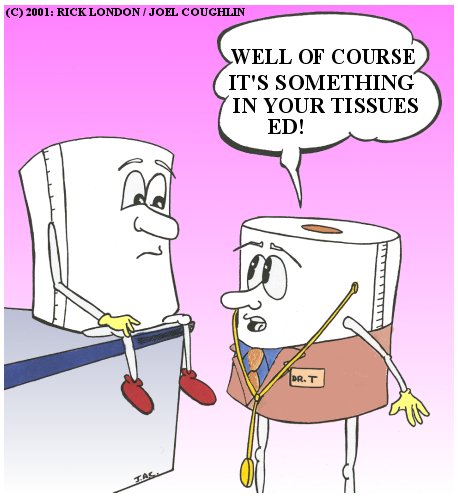
 |
| Tissues/Skin | Nervous System | Musculo-Skeletal | Limbs/ Movement | Head/Neck | Brain |
TISSUES AND SKIN
LEARNING OBJECTIVES
|
BACKGROUND AND PREPARATION
|
ACTIVITIES
|
LAB
|
| WEB RESOURCES For Tissues and Histology Jay Doc HistoWeb catalog of microscope slides of human tissues http://www.kumc.edu/instruction/medicine/anatomy/histoweb/index.htm University of Delaware Histology course with tissue images, labeled drawings, 3-d reconstructions http://www.udel.edu/Biology/Wags/histopage/histopage.htm Histology World (histology can be fun?) http://www.histology-world.com/
For Skin National Institute of arthritis, muscle, skin http://www.niams.nih.gov/hi/index.htm Health info on various topics, good section on acne
The skin cancer foundation Self-exam for skin problems, lots of info on skin cancers
Melanoma Education Foundation Specifically devoted to educating about early detection and helping to prevent melanoma
http://www.skincarecampaign.org/pages/home.htm Skin Care Campaign British website aimed at keeping informed and up to date on all kinds of skin conditions
DermNet New Zealand Very complete info on all skin diseases and problems with diagnostic photos, etc, geared towards working medical doctors, but good info.
Kids Health skin information. Site also includes great info for kids about their bodies in general and medical issues http://kidshealth.org/kid/body/skin_noSW.html
Loyola Univeristy Medical Educaiton Site http://www.meddean.luc.edu/lumen/MedEd/medicine/dermatology/melton/skinlsn/sknlsn.htm Some good basic info—this is the skin region of the site.
For Skeletal Tissues
http://www.gentili.net/fracturemain.asp# Click on skeleton and see x-ray images of bone fractures all over body
|

Biology Department In Ecuador:
Yavapai College Casilla 10-01-699
1100 East Sheldon Street Ibarra-Ecuador
Prescott, AZ 86301 Tel: 593-62-608-789
Office: 4-233A Yahoo E-mail
Phone: (928) 717-7628; (800)-922-6787